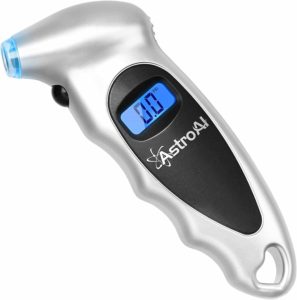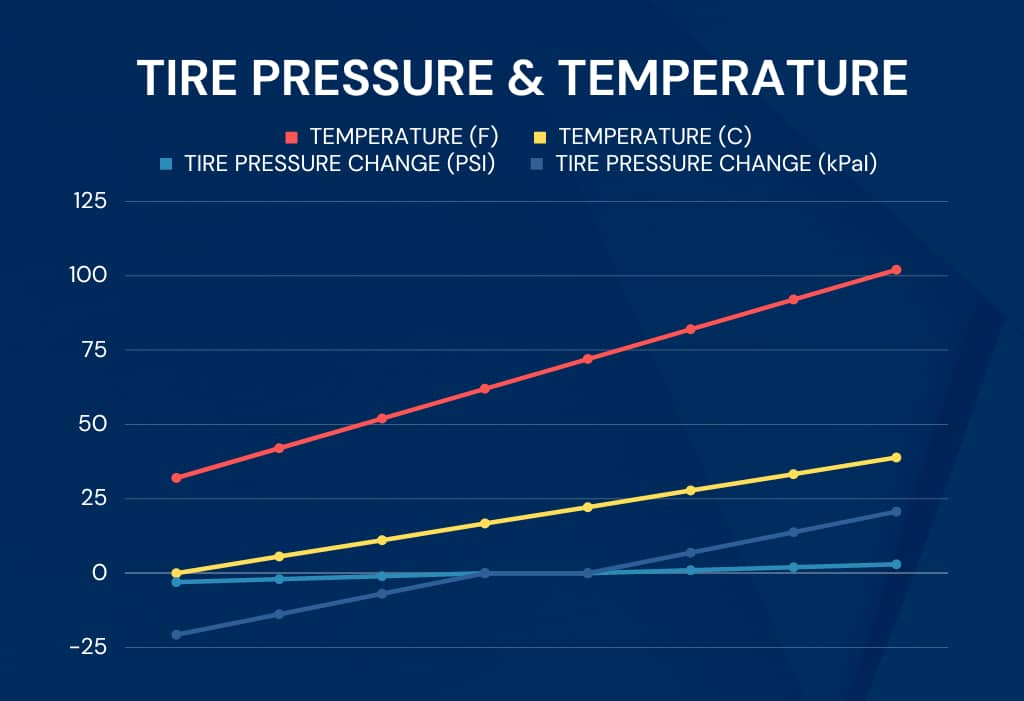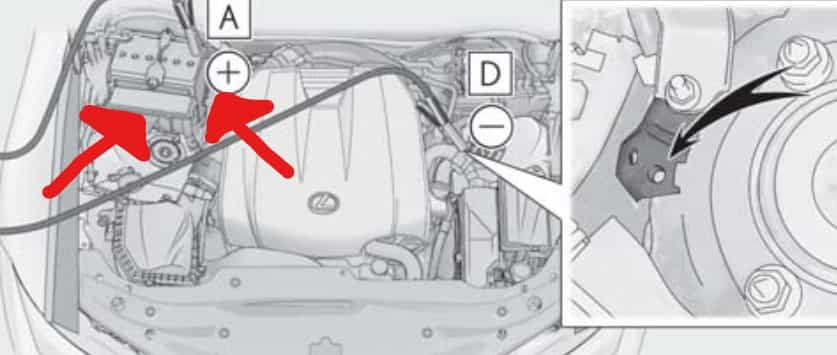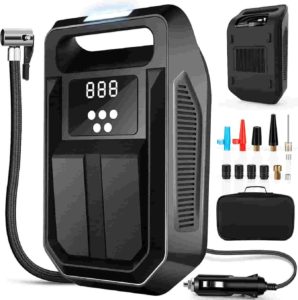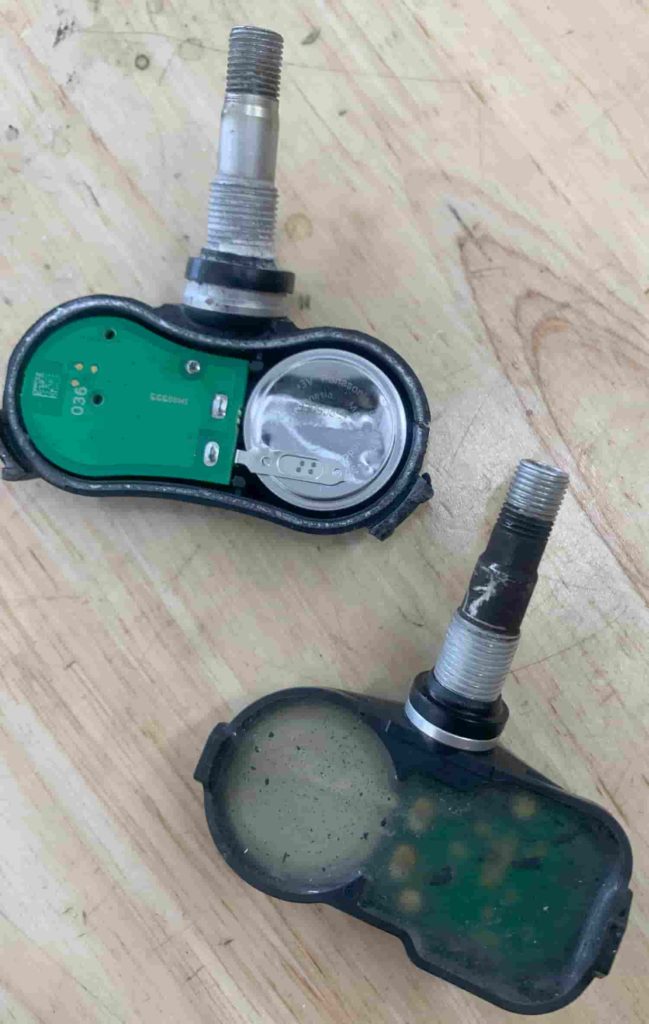Introduction
Unravel the mystery behind the tech that keeps your ride smooth and safe! With every pump of the pedal and rev of the engine, your Lexus IS’s Tire Pressure Monitoring System (TPMS) diligently oversees your vehicle’s performance, making sure each tire’s pressure is just right. An underappreciated gem, the TPMS safeguards your fuel efficiency, preserves your tire lifespan, and above all, ensures your safety. Ready for a deep dive into this automotive marvel? Buckle up and let’s explore the ins and outs of the Lexus IS TPMS system.
How Does the Lexus IS TPMS Work
The Tire Pressure Monitoring System (TPMS) in a Lexus IS is an essential vehicle safety feature that actively monitors the pressure in all four tires to ensure they are properly inflated. Underinflated tires can lead to various problems, including decreased fuel efficiency, impaired handling, and even tire failure, making the TPMS a key contributor to vehicle performance and safety. Here is a detailed breakdown of how the Lexus IS TPMS works:
Sensors and Transmitters
Every tire on the Lexus IS has a pressure sensor mounted inside it, attached directly to the valve stem. These are battery-powered devices that continually measure the tire’s air pressure. If the pressure drops below a certain predetermined threshold (usually about 25% below Lexus’s recommended level), the sensor sends a signal to the vehicle’s TPMS receiver. The sensors also transmit regular ‘health checks’ to the system, ensuring they are functional.
TPMS Receiver and Central Control Module
The TPMS receiver, which is a component of the vehicle’s central control module (usually the Engine Control Unit, or ECU), picks up the signal from the tire pressure sensors. It continually monitors these signals to ensure all tires are adequately inflated.
Dashboard Warning Light
If the TPMS receiver detects low tire pressure, it sends a signal to illuminate a warning indicator on the vehicle’s dashboard. In the Lexus IS models, this is an icon that looks like an exclamation point within a tire cross-section (“(!)”). The light will stay on until the tire pressure issue is resolved or the TPMS system is reset.
Direct Vs. Indirect TPMS
The Lexus IS uses a direct TPMS as described above which measures the pressure in each tire individually. This is in contrast to indirect TPMS systems, which infer tire pressure based on the rotational speed of the wheels (using the wheel speed sensors of the Anti-lock Braking System) – underinflated tires rotate faster than properly inflated ones. However, indirect systems don’t measure pressure directly, making them less accurate, and they cannot indicate which specific tire is underinflated.
Maintenance and Resetting
Like any component of a vehicle, the TPMS requires regular maintenance. The battery in the pressure sensors can run out, or the sensors themselves may need replacement due to wear and tear. Most of these sensors are designed to last for many years, but it’s advisable to have them inspected during regular vehicle maintenance. When the TPMS light is illuminated on the dashboard, the tires should be inspected and inflated to the proper pressure as soon as possible. Once the tires are correctly inflated, the TPMS needs to be manually reset.
The TPMS is an important safety and performance feature in the Lexus IS, helping to ensure that the tires are properly inflated at all times. Properly inflated tires not only last longer and provide better gas mileage, but they also help ensure that the vehicle is safe to drive, making the TPMS an essential part of your Lexus IS.
Tire Pressure
How to Check and Adjust Tire Pressure
Checking the tire pressure in your Lexus IS is a relatively straightforward process. However, you need to make sure you have a tire pressure gauge on hand before starting the process. Here’s a step-by-step guide on how to do it:
Step 1: Get a Tire Pressure Gauge
A tire pressure gauge is an essential tool for checking tire pressure. There are different types of gauges, including stick, digital, and dial, all of which are generally accurate and easy to use. You can buy one at any auto parts store.
Step 2: Determine the Correct Tire Pressure
Check your vehicle’s owner manual or the driver-side door jamb’s placard for the recommended tire pressure. It’s typically listed in pounds per square inch (PSI). Keep in mind that the recommended pressure may vary between the front and rear tires.
Step 3: Wait for Tires to Cool Down
For an accurate reading, check the tire pressure when the tires are cold. Tires heat up as you drive, causing the air inside to expand and the pressure to increase. If you must drive before checking the tire pressure, try to wait at least three hours after driving for the tires to cool down. This is often referred to as “cold pressure”
Step 4: Remove the Valve Cap
Each tire has a valve stem protruding from its side, often near the hubcap. The valve stem is covered by a small cap to protect it from dust and debris. Unscrew this cap and keep it in a safe place so you don’t lose it.
Step 5: Check the Tire Pressure
Place the tire pressure gauge onto the valve stem and press down hard enough so that the hiss sound disappears and your gauge provides a reading. With a digital gauge, the reading should appear on the screen. With a stick gauge, a stick will pop out the bottom with the tire pressure reading, and on a dial gauge, a needle will point to the pressure.
Step 6: Compare the PSI to the Recommended Pressure
Compare the reading from your gauge with the recommended tire pressure for your Lexus IS. If it’s too high, you can release some air from the tire by pressing on the small stem in the center of the valve and then check the pressure again. If it’s too low, you’ll need to add air until it reaches the recommended level.
Step 7: Repeat for All Tires
Repeat the process for each tire, including the spare if your vehicle is equipped with one. Even if only one tire seems low, it’s a good idea to check all tires to ensure they’re properly inflated.
Step 8: Replace the Valve Caps Once all the tires are at their correct pressure, replace the valve caps by screwing them back onto the valve stems. This protects the valves from accumulating dust and debris.
2023 Lexus IS Tire Pressure
TIRE SIZE | FRONT PSI | REAR PSI |
235/45R18 | 35 | 35 |
235/40R19 | 35 | 36 |
265/35R19 | 35 | 36 |
SPARE | 60 | 60 |
Does Weather Affect Tire Pressure?
Fluctuations in weather conditions have a substantial influence on the tire pressure of your Lexus IS.. Tire pressure generally changes by approximately 1 PSI for every 10 degrees Fahrenheit change in ambient temperature. During the winter season as the temperature descends, you might observe a reduction in tire pressure and your tire light coming on. This is due to the air inside the tires contracting, resulting in a drop in pressure. Conversely, in the hotter months the internal air expands leading to a rise in pressure. Overinflated and underinflated tires can both detrimentally affect tire durability, handling, and safety. Consequently, it is essential to regularly monitor and adjust your tire pressure particularly during significant shifts in weather.
TPMS Warning Signals and Safety Considerations
Why Does the Lexus IS Tire Pressure Light Come On?
Seasonal temperature changes: A drop in ambient temperature can cause tire pressure to decrease, triggering the warning light.
Tire puncture or leak: A sharp object or road debris like a nail or screw may puncture a tire, causing air loss which will of course activate the warning light.
Faulty tire pressure sensor: Damaged or malfunctioning sensors may provide inaccurate readings, resulting in a false alert. The only way to determine which sensor is faulty is to scan each sensor with a TPMS diagnostic tool.
Valve stem issues: A damaged or leaking valve stem can lead to gradual pressure loss and eventual activation of the tire pressure light. They make kits to replace the rubber gasket that usually goes bad.
Tire damage: Impact from potholes or hitting a curb can cause structural damage like tire bubbles, leading to pressure loss.
Sensor battery life: TPMS sensors are battery-powered, and over time, batteries die. (they usually last anywhere from 5-10 years) This will cause the tire pressure light to turn on and flash.
Recent tire rotation or replacement: If the tires have been recently rotated or replaced, the TPMS may need recalibration to avoid false alerts. The vehicle’s computer may think the front tires are in the rear and rear in the front after a rotation.
Wheel issues: Damaged, corroded, or cracked wheels can lead to air leaks and pressure loss. This is very common with low profile tires.
Altitude changes: Climbing or descending in elevation can affect tire air pressure and trigger the TPMS warning. An additional 1.5 Psi per Km above sea level is required.
Natural pressure loss: Tires lose air pressure over time due to temperature changes and permeation. Tire dry-rot will happen to tires that sit.
Electrical problems or software issues within the car’s TPMS system. Occasionally the system may have a software update from Lexus.
Snow Tires: If you have a separate pair of wheels for your snow tires, you can either transfer the sensors from your summer wheels or acquire an additional set of 4 sensors for the second pair of wheels. However, if you are using the same wheels for both sets of tires, there is no need to be concerned about this.
Is it Safe to Drive With the Tire Light On?
We strongly discourage driving if your tire pressure warning light is illuminated, as it could place your safety at risk. It is crucial to identify the underlying problem. Is there a foreign object, such as a nail or screw, lodged in the tread? Is there a leak in the bead seal? Is air escaping from the tire at a rapid or gradual pace? Identifying the specific problem is the only way to assess whether it’s genuinely safe to drive with the tire warning light on, and if so, for what duration. This is exactly why keeping a portable tire inflator in your car can be an excellent precautionary measure.
What are the Impacts of Driving with Underinflated Tires?
Driving a Lexus IS, or any vehicle, with underinflated tires can have a variety of impacts. Here are a few:
Underinflated Tires:
Decreased Fuel Efficiency: Underinflated tires create more rolling resistance, which means the engine has to work harder, thus reducing fuel efficiency.
Poor Handling: Tires that are underinflated can negatively impact the vehicle’s responsiveness, steering, and overall handling.
Increased Tire Wear: Underinflated tires tend to wear out more quickly and unevenly, particularly on the edges of the tread, leading to a need for earlier replacement.
Overheating Risk: Underinflated tires generate more heat due to increased friction with the road. This could potentially lead to a blowout, particularly in high-speed or long-distance driving scenarios.
Enhanced Likelihood of Tire Damage: Tires that are underinflated are more susceptible to damages from road hazards like potholes or sharp objects.
Resetting and Troubleshooting the TPMS
Lexus IS Tire Pressure Light Reset Procedure
Adjust the tire pressure to the recommended cold pressures.
Stop and shut off the vehicle and switch the ignition to the ON Position. (engine off, push the push start button twice without your foot on the brake)
Using the arrow buttons on the right side of the steering wheel, scroll over and select the gear icon. (Vehicle Settings)
Scroll down using the down arrows on the steering wheel and select TPMS or TPWS.
Hold down the OK button on the steering wheel on “Set Pressure” until the tire pressure light blinks 3 times.
Release the button after the tire light has finished blinking.
Drive the Lexus for 15 minutes or more at 25 mph or more or until the PSI of each tire is displayed on the information display.
Older Lexus IS Models Tire Pressure Light Reset Procedure
If your Lexus IS doesn’t have the TPMS or TPWS setting on the information display, check under your steering wheel for the reset button.
Find a safe location and park your vehicle. Turn off the engine.
Don’t move the vehicle during this process.
Adjust the tire pressure to the recommended level
Remember, the tire pressure warning system uses this pressure level to function.
Turn on the engine but don’t start it (IGNITION ON mode).
Press and hold the tire pressure warning reset switch until the warning light blinks three times slowly.
The display will show “–” for each tire’s pressure while the system figures out each tire’s position.
Once the system knows each tire’s position, it will show the pressure for each tire on the display.
Drive your vehicle at a speed of about 25 mph (40 km/h) for around 10 minutes.
After this, the display will show each tire’s pressure, indicating the process is complete.
If the vehicle is stopped for a long time (like at traffic lights), the process might take more than 10 minutes.
When Should You Reset the TPMS?
After Tire Rotation
After Changing a Flat Tire
After Inflation or Deflation
After Replacing a Tire Sensor
After Purchasing New Tires
After Tire Balances or Alignments
What Tools Do You Need to Reset the Lexus IS TPMS?
The only tool needed to reset the Lexus IS is an accurate air pressure gauge. The reset tool is built into the Lexus IS. Other tools are only necessary when the tire pressure system needs diagnosing. For example, a TPMS diagnostic tool is needed if there’s a TPMS malfunction and you need to identify which tire sensor is faulty.
Resetting the Lexus IS ECU
If all other troubleshooting methods have been unsuccessful and the tire warning light stays on,, it might be necessary to reset the Lexus IS’s computer system. This can be done by disconnecting the battery for a few minutes. To prevent any short-circuits, disconnect the negative terminal first. A 10 or 12mm wrench or socket will be required to loosen the nut on the terminal. By disconnecting the battery, the power supply to the Engine Control Unit (ECU) is interrupted, which clears all accumulated error codes, including the one causing the tire pressure warning light to activate. This action also resets the computer’s adaptive memory settings. After reconnecting the battery, your Lexus IS will enter a “relearning” phase where it recalibrates all its sensors and actuators. To complete the relearn phase, drive at a speed of 50 Mph for at least 30 minutes.
Why is the Tire Light Flashing?
Your Lexus IS also has a special warning light to alert you to potential issues with your tire pressure monitoring system (TPMS). It’s called the TPMS malfunction indicator. This warning light uses the same yellow exclamation point as the standard tire pressure warning light. If there is a problem with the TPMS, the light will flash for approximately one minute before staying on. This sequence will occur every time you start your car until the issue is resolved. When your tire light is flashing, the system may not be able to accurately detect low air pressure. Basically, a blinking tire pressure light typically signals a malfunction within the TPMS itself, rather than an actual tire pressure concern.
What Causes the TPMS to Malfunction?
Using non Lexus wheels or tires.
Interference from electronic devices that use radio frequencies can interfere with the TPMS’s ability to monitor the tire pressure.
If your Lexus IS has very dark window tints, they can potentially disrupt the radio signal communication between the TPMS sensors and the ECU.
If the tire pressure is extremely high.
If wheels without tire pressure sensors are installed on the car.
If there is a lot of ice or snow on or around the tire valves.
If the Lexus IS receiver module/ECU does not recognize new tire pressure sensors installed.
Some Lexus IS models include a full size spare tire with a pressure sensor, some do not. If your spare tire does not have a sensor in it and you drive with the spare on, it will cause a TPMS malfunction.
Tire Leaks and Solutions
Identifying the Source of a Tire Leak?
Start by checking the air pressure in each tire to determine which one is underinflated. Next, inflate the underinflated tire, as this procedure won’t work if the tire is devoid of air. Then, take a spray bottle filled with a mixture of water and soap (or Windex) and thoroughly spray the entire tire. Pay close attention to the bead (the section where the tire meets with the rim of the wheel) and the valve stem. Make sure the entire surface of the tire is soaked. After waiting for a few moments, carefully look over the tire for any small bubbles. Check the outside of the tire as well as the inside of the tire. If there’s a leak and the tire has been sprayed with the soapy solution, the escaping air will cause tiny bubbles to form at the leak site. Be patient in finding the bubbles, if the tire is losing air, there is a leak somewhere!
Are Tire Plugs Reliable?
Definitely! Based on my firsthand experience with using tire plugs to fix hundreds of tires, I can vouch for their reliability. Tire plugs serve as a trustworthy fix for holes in the tire’s tread area. They are designed to be pushed directly into the holes made by things like nails or screws, effectively blocking the hole and stopping air from escaping. (Remember, you need to take out the object that caused the hole first.) Tire plugs are made from tough, rubbery materials and are designed to withstand the tough conditions inside a tire, including big changes in air pressure and temperature. If installed correctly, a tire plug will last for the rest of the tires lifespan. But keep in mind, you shouldn’t use tire plugs to fix the tire’s sidewall.
Are Tire Sealants Safe?
Tire sealants can be a fast solution for a flat tire on your Lexus IS in emergencies, but they’re not designed for extended use. These products can cause serious damage to your tire pressure sensors, as the sealant can get inside the electronic circuit board of the pressure sensor and destroy it. Tire sealants can also harm the tire itself, making future repairs unfeasible. They can also throw off the tire’s balance, causing you to feel vibrations while driving. Remember, you’re basically filling the tire with a liquid. As a general rule, it’s advisable to steer clear of using tire sealants unless it’s completely necessary. If you find yourself needing to use a tire sealant, ensure to take your Lexus to a tire repair shop ASAP!
Advanced TPMS Topics
How to Install and Calibrate New TPMS Sensors
Firstly, the wheel needs to be removed from the Lexus IS, followed by the removal of the tire from the wheel to gain access to the sensor. Generally, the base of the old sensor is loosened with a tiny screw and removed and then the valve stem is pulled out through the top of the wheel. Once the old sensor is out, the new one can be installed. (We suggest taking a photograph of each new sensor’s ID code prior to installation, as these numbers may be required later and will be inaccessible once the tire is remounted onto the wheel.) Ensure that your new sensor is compatible with the Lexus IS ECU. To install the new sensor, use a tire valve removal tool to guide the valve through the valve hole in the wheel. After the new sensor is in place and the tire is mounted back on the wheel, the new sensor needs to be registered with the Lexus IS’s Electronic Control Unit (ECU). This is called the TPMS “relearning” process. At this point, the ECU is programmed with the new sensor’s unique ID code, allowing it to receive signals from the new sensor. A TPMS relearning tool is required for this step. Each of the tire pressure sensors needs to be scanned, and then the tool must be synced with the vehicle’s ECU. This is achieved by connecting the TPMS tool to the Lexus IS OBD port located beneath the steering wheel.
Tire Pressure Sensor Batteries
The battery within the pressure sensor is a small sealed unit designed to last for several years — often the lifespan of the tires or even the vehicle. It’s important to note that these batteries are non-replaceable. The batteries look like wrist watch batteries and are attached to the circuit board within the sensor.This means that once the battery depletes, the entire sensor unit needs to be replaced. The battery’s lifespan can vary depending on factors such as driving conditions and climate, but on average, they tend to last between 5 and 10 years.
TPMS and Legal Considerations
Are TPMS Sensors Legally Required?
Across many parts of the world, including the United States and Europe, the law mandates the use of tire pressure monitoring system sensors in vehicles. The TREAD Act of 2000 in the U.S. requires all vehicles manufactured after September 2007 to be equipped with a TPMS. This law is primarily directed at manufacturers, not drivers, with the goal of enhancing road safety by alerting drivers to significant tire pressure changes. Similarly, European regulations from November 2012 onwards require all newly produced passenger vehicles to be fitted with a TPMS. The primary aim of these regulations is to prevent accidents caused by tire failures.
Will My Lexus IS Pass a State Inspection With the Tire Light On?
Yes. In certain states, the tire pressure monitoring system is inspected during a vehicle’s safety examination, but the specific requirements can vary. For example, in New York, the tire pressure light is assessed as part of the inspection process, but it is not a cause for failure. In Texas, the TPMS is checked during the safety inspection but you will not be failed if it isn’t working correctly. I am personally a licensed New Jersey state inspector and in NJ having a functional TPMS in a passenger vehicle is not a requirement. If the tire pressure light is on the vehicle will still pass inspection. Commercial vehicles are a different story because they still require “safety inspections”. (commercial vehicles can be identified by their license plates)The lack of uniformity between states means it is recommended to check with your local Department of Motor Vehicles or other relevant state agencies for the most accurate and up-to-date information.
Conclusion
From intricate sensors to alerting icons on the dashboard, we’ve delved deep into the hidden world of the Lexus IS Tire Pressure Monitoring System (TPMS). By enhancing vehicle performance, safety, and tire longevity, TPMS emerges as a silent guardian of your driving experience. With this newfound knowledge, you’re now equipped to tackle any TPMS-related issues and stay on top of your vehicle’s maintenance needs. Remember, just like a perfect drive, it’s all about maintaining the right pressure. So, keep cruising with confidence, knowing that your Lexus IS TPMS is continuously working to keep you safe on the road. This article is applicable to all Lexus IS models and trims including the 2024 Lexus IS 300, IS 300 AWD, IS 350 F Sport Design, IS 500 F Sport Performance, and IS 500 F Sport Performance Premium.


